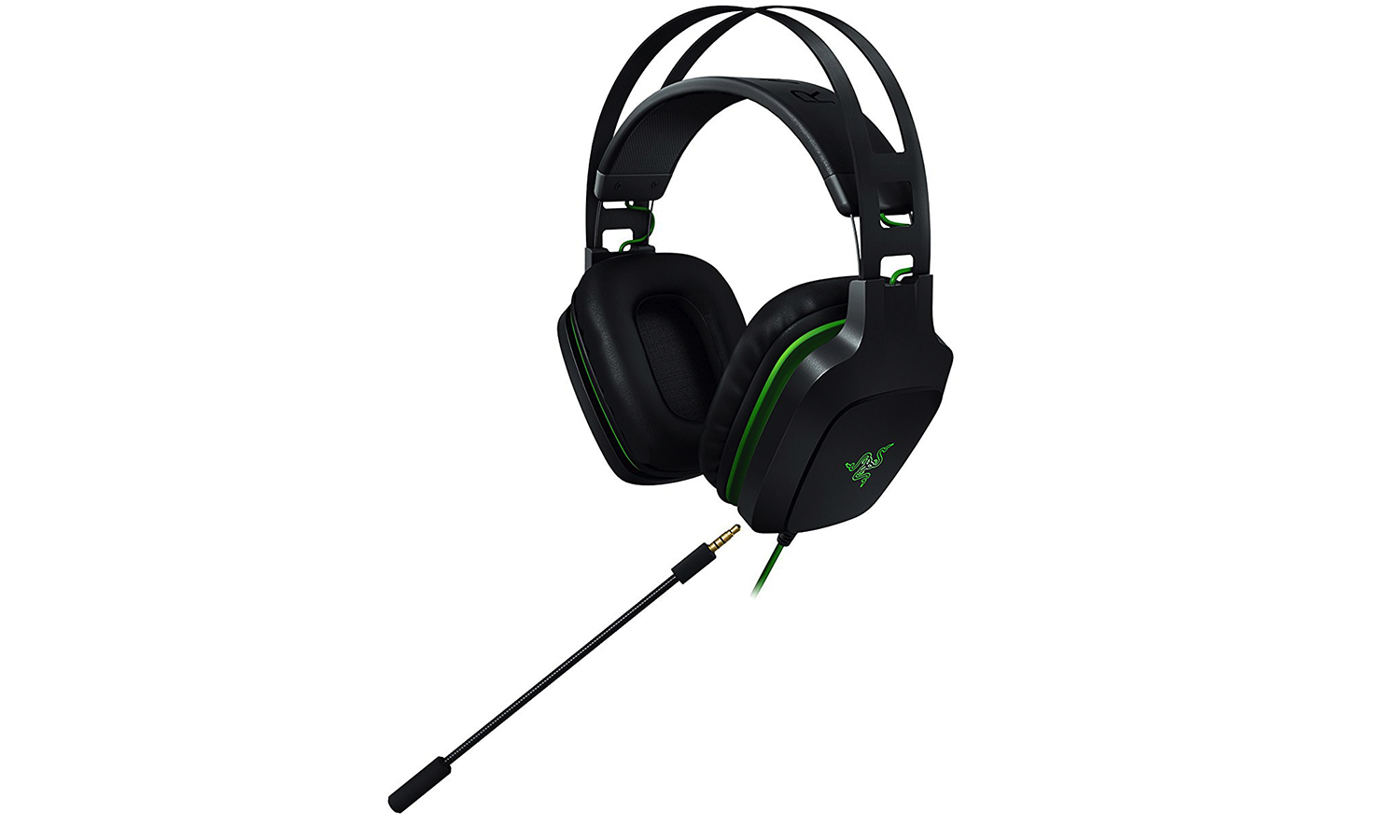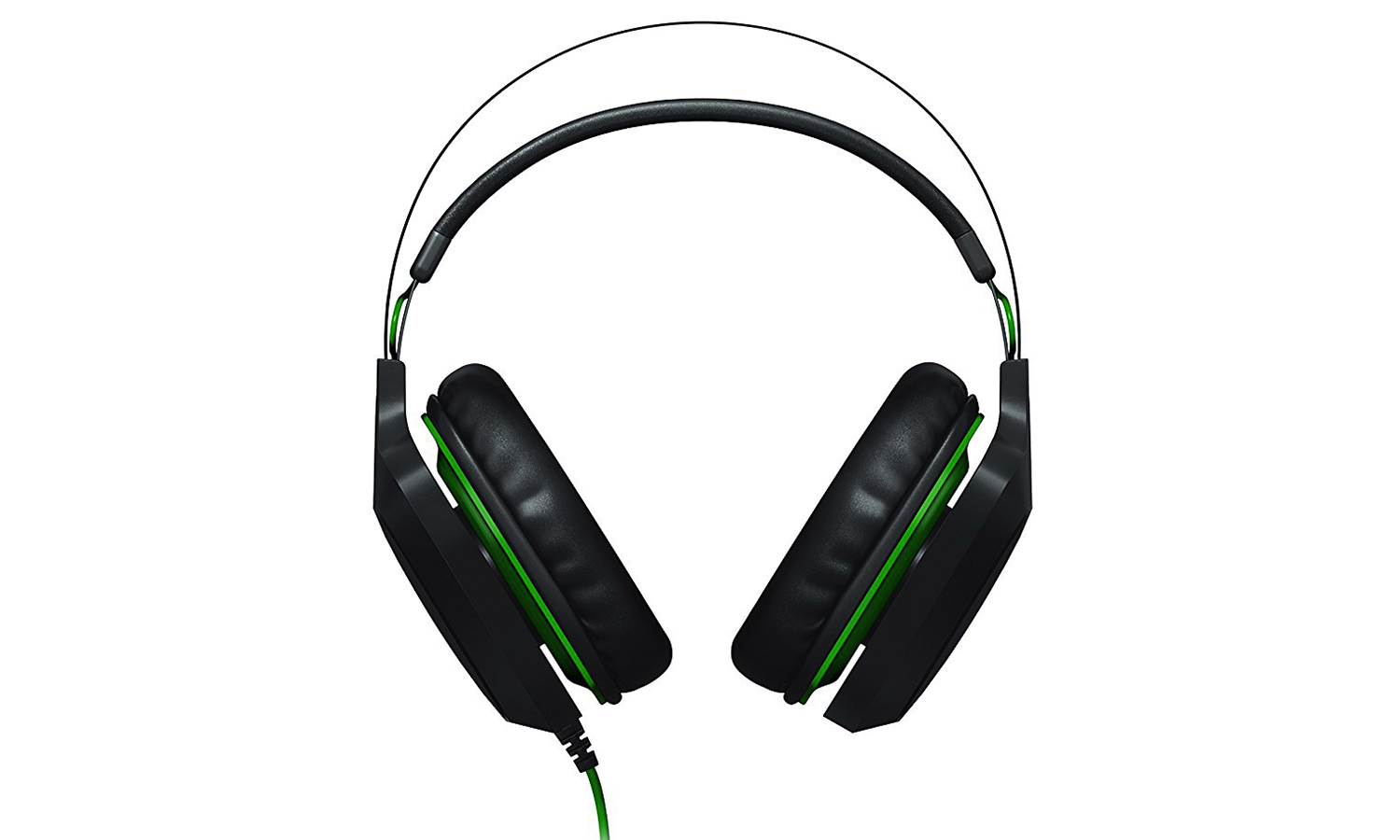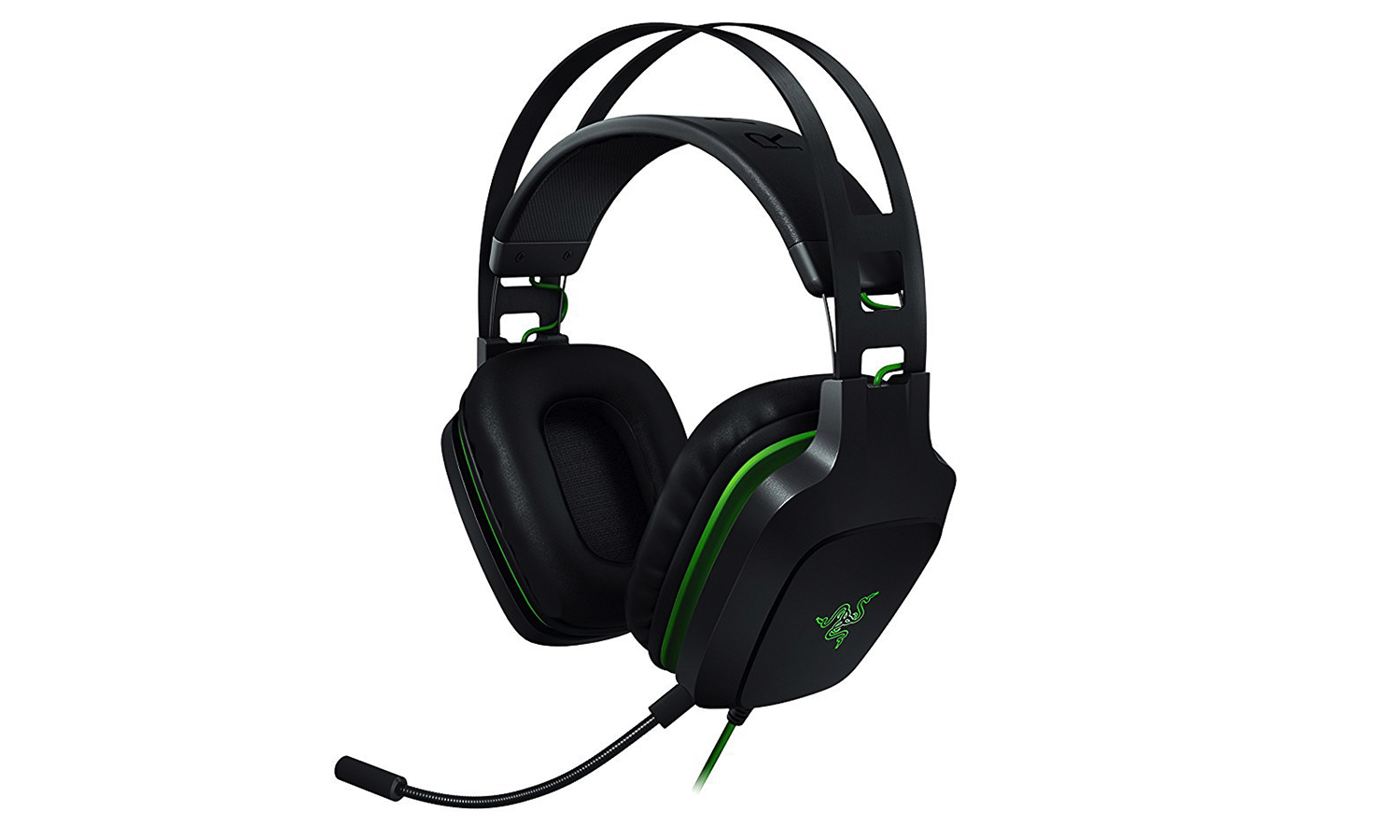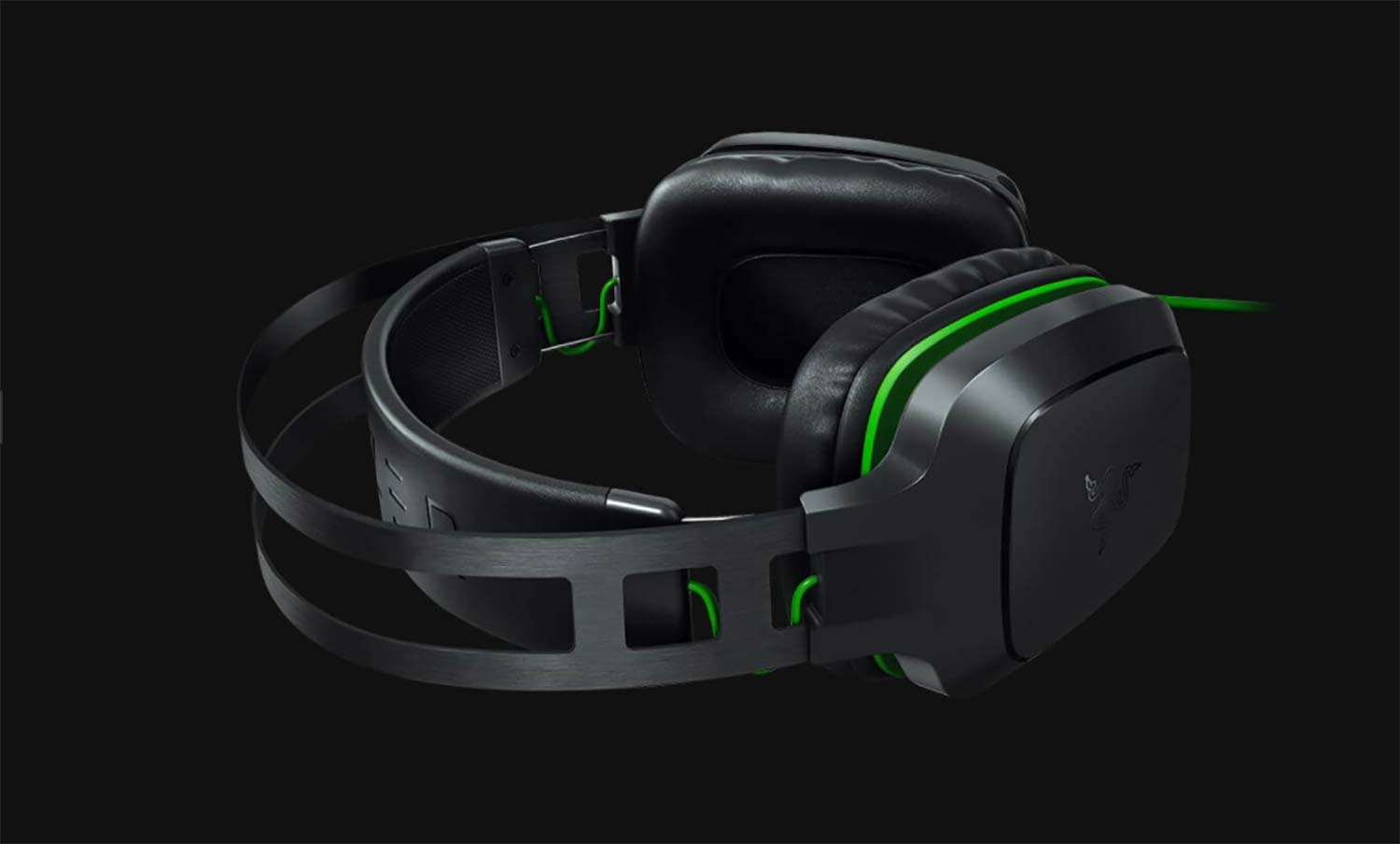Tom's Guide Verdict
The Razer Electra V2 is comfortable and even somewhat innovative, but so-so audio holds the headset back.
Pros
- +
Sleek design
- +
Removable mic
- +
Versatile compatibility
Cons
- -
Lackluster sound
- -
Imperfect fit
- -
Imprecise volume controls
Why you can trust Tom's Guide
UPDATE, 3/13/18: After hearing about our issue with audio feedback while playing games, Razer suggested that the problem might be a faulty device, and sent us another Electra V2 headset. On our main gaming rig, the interference persisted; on some of our other test rigs, I did not hear any feedback. After some investigation, I was unable to find the root cause of the issue. In the interest of fairness, this does not appear to be a widespread issue — but in the interest of honesty, we were able to replicate it.
Some budget gaming headsets are better than others, but even among the good ones, there always seems to be something not quite up to snuff. The $60 Razer Electra V2 is a good example of this phenomenon. It's not too big, it fits comfortably and it works with PCs, consoles and mobile devices. But when push comes to shove, it just doesn't sound great, for either games or music.
There's no denying that the Electra V2 is a welcome advancement for Razer's budget headsets, in terms of both look and feel. Some of its design elements are downright forward-thinking — useful things you don't even find on better, more expensive headsets. A headset's primary purpose is to provide good sound, though, and the Electra V2 does a very mixed job of that. If you have an affinity for Razer gear and only $60 to play with, it's worth considering, but there are better peripherals out there in the inexpensive range.
Design
The Razer Electra V2 looks and feels like a much fancier headset. The chassis is plastic and metal, and looks like it could stand up to a moderate amount of punishment. Best of all, it has an automatically adjusting, padded headband that rests on four thin steel wires. You just put it on and it fits — no tedious notches required.
The microphone would also be right at home on a more expensive device. The mic, which sits at the end of a flexible metal arm, is removable, meaning you can bend it out of the way, or simply take it off if you're not using it.
The Razer Electra V2 looks and feels like a much fancier headset.
Where the budget price shows is on the back of the left ear cup. There's a mic mute button, which works well enough, but there's also a volume rocker. This isn't nearly as good as having a dial. The rocker doesn't tie into the Windows volume levels, and you can't actually move it that far. As such, there's no real precision; it'll either be loud, or soft, or turned off completely.

Connecting the 3.5-millimeter cable to the (included) splitter for PC gaming is also not as neat as it could be. The Electra V2's single-input, 3.5-mm cable is at a 90-degree angle, which is good for phone connections, but it creates an unseemly snag when plugged into a splitter (or a game controller).
Comfort
First things first: The Elektra V2's headband is not quite as comfortable as the elastic models from SteelSeries. It's a bit bulkier, and there's no way to loosen or tighten it, if it sits a little low or a little high on your ears.

Apart from that, though, the Electra V2 is easy to wear, even if it's a bit tight (or a bit loose, depending on the size of your head). The leatherette ear cups had a fair amount of give, and I was able to wear it for about 2 hours at a time without issue. Past that, I'd start to feel a little pressure around my ears — not painful, but a little uncomfortable. I think it'd hold up well to the average evening play session, but maybe not for hours upon hours of esports practice.
MORE: The Best Headsets for Immersive Gaming
I handed off the Electra V2 to a co-worker, who mostly shared my opinion. He found them a bit tight right off the bat, but liked the feel of the ear cups and the adjusting headband. He wished that he had had more control over the headband's fit, though, since that would have helped him to make a better seal around his ears.
Gaming Performance
The Electra V2 is functional in-game. I heard enemies behind me in Overwatch; the laser blasts of Terran armies in StarCraft; the taunts of orcish captains in Middle-earth: Shadow of War; and the whoosh of passing starships in Star Trek Online. There wasn't a great balance between music and voice work, though, so finding the right volume was a bit of a challenge. I heard everything clearly, but there was no kind of immediacy or vibrancy to the sound. More than simply flat, the Electra V2's sound profile was dull.
Whenever I played a PC game, I'd get some annoying hissing in the background, which increased or decreased along with game volume.
There was also a feedback issue that I couldn't quite shake, regardless of whether I used the dual-input or single-input 3.5-mm cables. Whenever I played a PC game, I'd get some annoying hissing in the background, which increased or decreased along with game volume. I tried multiple games and multiple PCs, but encountered the issue wherever I went. After a while, I learned to tune it out, but it was very unpleasant, and not the kind of thing that I'd want to encounter while sitting down for a multihour play session.
MORE: The Best PC Games to Play Right Now
Performance on mobile devices and consoles was, thankfully, much smoother. I didn't hear any feedback as I played PS4 and Switch games, or on my mobile phone. Even so, the sound quality was similar: workmanlike and functional, but without any particular flair or depth.
Features
Since the Electra V2 connects via 3.5-mm jack, there's no software to worry about — in theory. In practice, Razer offers software known as Razer Surround, which ties into its Synapse program. Razer Surround can mimic the feel of surround sound on any pair of stereo headphones, and the effect is passable. While it doesn't completely mimic the complete directional audio you'd get from a 5.1 or 7.1 surround-sound headset, music and sound effects feel a little more rounded and immersive than usual.

I didn't get much use out of the feature, but it's worth pointing out in case you absolutely must have surround sound in your life. It's not quite a replacement for the real thing, but it's better than not having the option.
Otherwise, the microphone — which looks and feels great — sounds just OK. I recorded my voice while I was in a variety of positions, and while the sound pickup was sufficiently loud, my voice had a pinched, nasal quality, and the recording picked up a fair amount of background noise. It'd work for casual multiplayer games; but I wouldn't trust it with anything more sensitive than that.
Music Performance
The Electra V2 looks a little over the top for something you'd take out of the house, but since it has a removable mic and a 3.5-mm audio cable, I had hoped it might double as a pair of everyday headphones. No such luck: The Electra V2 makes music sound muddled and lifeless. The balance between instruments and vocals almost always favors the former, and the vocals sound like they're coming from across a crowded bar rather than a majestic music hall.
MORE: Best Headphones and Earbuds for Enjoying Music
To be fair, cheap gaming headsets don't have the best record when it comes to music, but the Electra V2 doesn't do anything to buck the trend. You could use the Electra V2 as your go-to music headphones, but it'd be a disappointing way to listen to your favorite tunes.
Bottom Line
Considering the price, the Electra V2 is a good enough gaming headset, and even has a few cool design flourishes. Even so, there's something lackluster about the sound quality, for both games and music. While it's not profoundly disappointing, like losing a $100 bill would be — it is mildly disappointing — like finding a forgotten banknote in your pocket, then realizing it's only $1.
For gamers who swear by Razer's gear and want an inexpensive, no-nonsense headset, the Electra V2 is worth a look. But it's not necessarily the best option in this price range. The HyperX Cloud Stinger has a more comfortable fit; the Astro A10 has better sound quality; and the Logitech G433 has more applications outside the house.
In the end, the Electra V2 isn't that exciting, but at least it won't give you a complex. (Google it. Maybe not at work.)
Credit: Razer
Marshall Honorof is a senior editor for Tom's Guide, overseeing the site's coverage of gaming hardware and software. He comes from a science writing background, having studied paleomammalogy, biological anthropology, and the history of science and technology. After hours, you can find him practicing taekwondo or doing deep dives on classic sci-fi.


